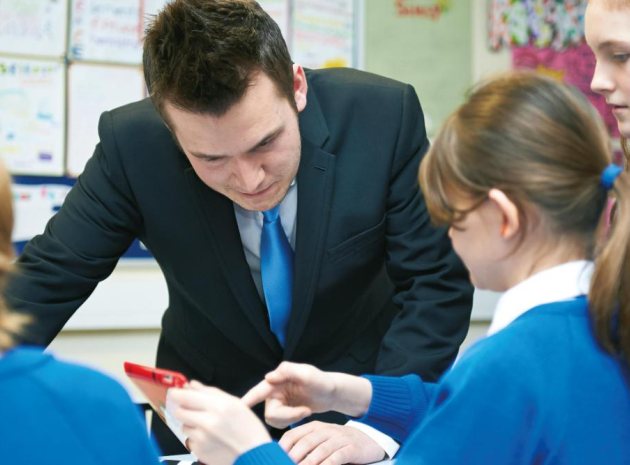I became a campaigner for STEM back in 2006, when at the age of sixteen I became Young Engineer for Britain. Up to this point, I had enjoyed all STEM subjects, but wanted to follow a career in law.
The catalyst for change came when my GCSE resistant materials teacher set me the challenge to design something for his elderly father that allowed him to walk up and down his own stairs unaided. He wasn’t able to have a stair lift and wanted something that would enable him to keep active. The project really caught my imagination. My teacher soon realised that I would need outside help to make my product – it had gone past being constructed in school lathes and with handheld saws, and so I was put in touch with Reg, who owned a local engineering firm. With his guidance I patented the project and produced a full size unit. Together we set up StairSteady Ltd to protect, and later produce and sell the product.
The StairSteady is simple to use – it requires no electric or electronics and is completely mechanical. The beauty of this is that the user can use the stairs at his or her own pace, safe in the knowledge that the necessary support is there. There are no running costs and it can even be used in a power cut, meaning the user is never left ‘high and dry’. It is like having a walking frame for the stairs, which can be mounted by our engineers at any height, making it suitable for any age or height of customer.
I found this design to be unique, there was nothing like it available at the time, however I soon realised that making a single example of a product is very different from having something that is fit for market. I look back at the development stage with a fondness; we felt like explorers, we had no idea what was possible, but shared a real passion to make it work.
Natural inclinations
The older I become, the more I see that I really was always destined to have a career in STEM. In fact both my younger sister and brother have careers in or are studying STEM too. When at the age of seven my dad first taught me to programme in BASIC, I should have realised where my passions lay. Why then did it take a ‘push’ for me to end up in a STEM career? I think it’s because I didn’t realise that my interests and passions could be fed through such a path. I never saw that my keenness for problem solving, logic puzzles, maths, or even my love for Lego, stood me in perfect stead to have a career that nurtured those passions.
Looking back at how I was inspired into STEM I think it’s important to try and get students outside the classroom, to interact with people in the industry and with others who have a passion for science and engineering. Take the Big Bang Fair for example; a chance for young people to share knowledge, meet those who are already doing it and get inspired – not just by adults but also by their peers. As a daughter of an ex-teacher, now turned educational psychologist, I understand the red tape and the issues involved with leaving the classroom, but the rewards are potentially massive. If you can’t get away from school grounds, then invite people in, maybe in person, but also using technology. I am an avid fan of TED talks and the range of talks especially on the TEDed section can add excitement to any subject.
I also think the media have a big part to play in the education of the next generation and I’m so excited that BBC Learning is making its clips and information much more accessible to teachers, and geared up to be used in the classroom. Thus meaning teachers can use ten minutes of beautifully shot and edited clips of BBC programmes to inspire students.
There is merit in competitions, too, whether F1 in schools, Young Engineers, Crest Award or 4x4 in school – challenging young people and allowing them to meet with others with the same passion can really broaden their horizons. The Bloodhound SSC project is doing so much in schools to encourage and inspire young people into STEM. Bloodhound SSC is a supersonic car created by the international education initiative Bloodhound Project to attempt a 1,000 mph world land speed record. The online resources mean you don’t need to leave the classroom to education and engage. They even have suggested projects to do, video clips and fact sheets.
It’s all about you…
When analysing all the things that affected my journey into STEM, however, probably the single biggest influence of all was my teacher. Mr Stokes was head of technology and inspired so many to take up a STEM career. As a school we had a record number of winners of the Young Engineer for Britain award, and this was down to Mr Stokes. As a state school we had all the stresses and issues that any educational establishment has, but this man carried a spark that enthused numerous young people. I am sure that as he comes up to retirement he has no idea quite the impact he has had on so many, but STEM careers are so much richer because of his passion.
This is to me probably the most important thing that can be done to encourage students. You may feel you don’t have time, or budget or the facilities – and these things help – but the most important thing is to get across your passion and to nurture your students.
STEM has careers for every level of student; it is not just for the brightest, or the ones with the neatest writing. Some of the best designers can’t write about their ideas, but they can make them beautifully. It doesn’t have to be done out of hours, you don’t have to start a STEM club – although they’re great – it can be done in the time set aside for lessons if you encourage and inspire. I am in no way saying that there are not teachers already doing this. I have had the pleasure over the years to meet many who are really inspiring the next generation into STEM, but we all need to be shouting about how we are going to get more young people engaged with these subjects. Making sure they are a priority within our schools, sharing good practice with each other, and not getting disheartened – you have no idea how you may have, or may be affecting your students. Like a stone that is skimmed across a pond never sees the ripples it has caused, so many teachers never realise how many they encourage. I love hearing how people got into STEM careers and so often it’s a teacher. There are hundreds of educators across the country unaware of the difference that they are making.
STEM careers are constantly changing and developing, with jobs now open that weren’t even imagined when I left school. This is one of the hardest things our education system needs to do, to help young people to prepare for work, but also to prepare for jobs that often haven’t been created yet. To give the skills that allow them to have the basic knowledge they will need, but also the ability to adapt. To some that is an exciting concept and to others it fills them with dread. As an optimist, I’d like to think you would all take up that challenge.
ABOUT THE AUTHOR
Ruth Amos was Young Engineer for Britain 2006, with her idea, The StairSteady. As well as running StairSteady Ltd (stairsteady. net), she is deeply involved in the promotion of enterprise in education, working on a wide range of projects and sharing her passion about engineering and science with students and teachers throughout the UK.









